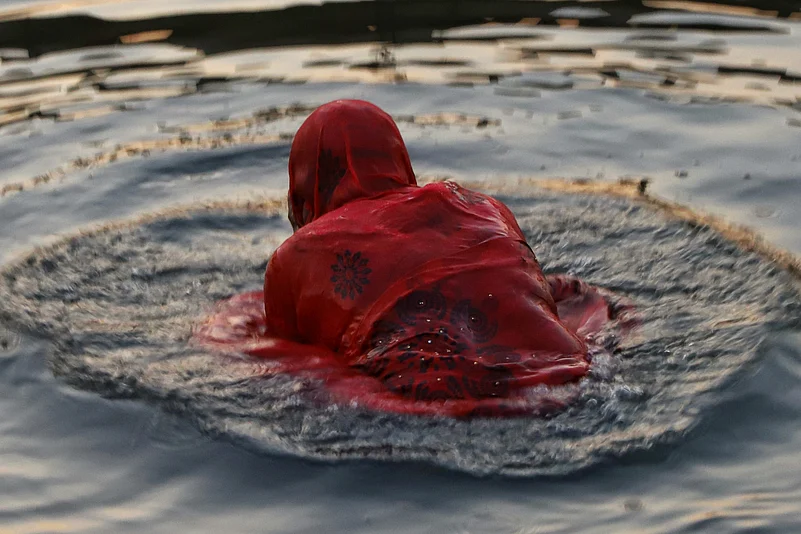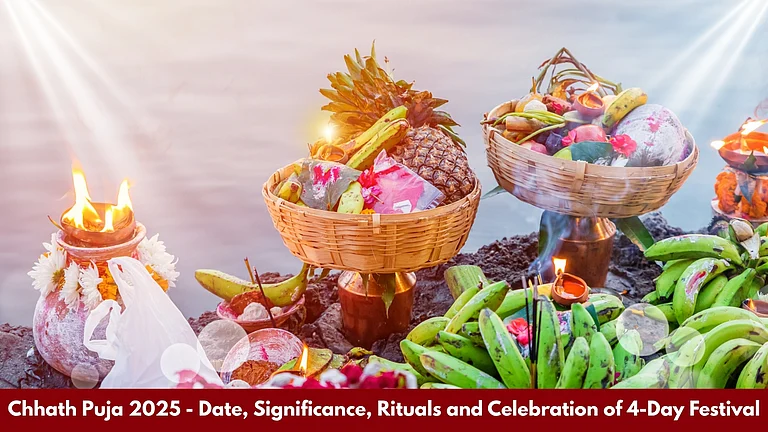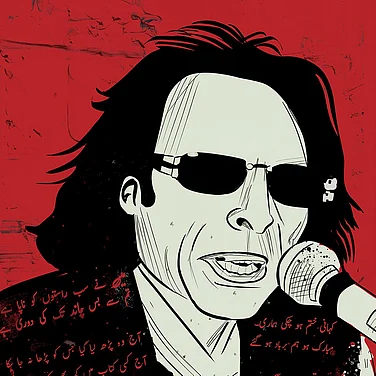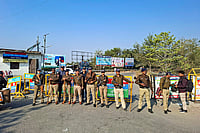
Chhath Puja is a regional religious ritual of the Gangetic plains.
The origins of Chhath reach back to the Vedic period, to the Rig Veda, which contains hymns praising and early Vedic rituals prescribing the offering of arghya.
Chhath Pujas are also rapidly evolving into platforms for local, national, and diasporic communities.
Chhath Puja, once primarily a localised, regional religious ritual of the Gangetic plains, has in recent decades come to embody the cultural soul and collective identity of Bihar and its people, with global resonance. Dedicated to the Sun God and his consort Usha, worshipped as Chhathi Maiya, has also become the most enduring and profound expression of what anthropologist Robert Redfield famously called the ‘little tradition’ —a form of folk Hinduism that is at once ecological, egalitarian and profoundly feminine. While the great tradition of Hinduism resides in Sanskrit texts, temples, and the authority of Brahmins, the little tradition continues to thrive in courtyards, kitchens, village ghats, ponds, and sanan melas as crucial registers of the sacred geographies and solidaristic gatherings of marginalised communities and upwardly mobile social classes in contemporary India. It is here that both what the legendary sociologist M.N. Srinivas called Sanskritisation and the rising trends of de-Sanskritisation merge, and the faith becomes tangible, embodied, and deeply democratic too.

The origins of Chhath reach back to the Vedic period. The Rig Veda contains hymns praising Surya, the cosmic witness who governs light and life, and early Vedic rituals prescribed arghya, the offering of water,to the sun as a gesture of submission and renewal. In the Mahabharata, King Karna, the elder brother of the Pandavas and a sun-born warrior who ruled over Ang Pradesh (modern-day Bhagalpur), performed rigorous sun worship, which gave him divine armour and strength. Draupadi, too, is said to have performed similar austerities to overcome suffering during vanvas (forest exile). Over the centuries, these rituals shed their elite and priestly associations and merged with the rhythms of agrarian and folk life in the Gangetic plains. Chhath Puja thus stands as a rare example of an ancient Vedic ritual that has survived not through institutional religion but through the collective faith of ordinary people.

In a time when religion often succumbs to grandiose spectacle or sectarianism, Chhath Puja sustains an older, humbler rhythm of mythopoetic memory of egalitarian community bathing rituals of an inclusive variant of ancient Hinduism -connecting the body, earth and cosmos with the vital elements of nature such as prithvi(earth), jal(water), agni(fire), vayu(air), and akash(horizon/ space). Drawing on the works of celebrated Patna-born Indian anthropologist Lalita Prasad Vidyarthi and British cultural anthropologist Victor Turner, Chhath Puja can also be understood as a mobile, fluid sacred homecoming pilgrimage of migrants, a process of moving from the familiar to the “anti-structural other,” characterised by communitas, a sense of equality and bonding among participants. In the context of development, displacement, economic diversification, and rural-urban migration in contemporary India, Chhath Pujas are also rapidly evolving into local, national and diasporic community platforms, facilitating the flow of ideas and narratives that reflect popular self-representations of the autonomous subaltern voices within the aspirational life worlds of Indians.

Performed entirely by householders themselves, most often by women who themselves become the priest. In this radical inversion of patriarchy's hierarchies lies the democratic power of the festival —its ability to reclaim the sacred for the ordinary, to sanctify the feminist-maternal agency in the civic sphere. No wonder it is also a religion of self-discipline and intimacy, with fasting, cleansing, and offerings to the visible sun (Surya Devta) and to Chhathi Maiya, the goodness of fertility and continuity. Its power lies not in grand theology but in extending the spheres of austere forms of spiritual and cultural humanism.

Yet beyond its religious and spiritual depth, Chhath Puja also offers a uniquely syncretic and participatory cultural and political experience, representing a celebration of India’s civilizational renaissance and renewal. No wonder, its contemporary significance unfolds across multiple layers — ecological ethics, women’s agency, migrant identity, vernacular modernity, and political symbolism. The four days of Chhath- Nahay Khay, Kharna, Sandhya Arghya (offering the setting sun) and Usha Arghya (offering to the rising sun) are also a post-anthropocentric celebration of the blurring of spatial and species distinctions. The puja materials used—clay stoves, bamboo baskets, river water, fruits, and thekua (a jaggery-sweetened offering) are often locally sourced and home-made. There is no idol, no temple, only worshippers. Every participant, rich or poor, Dalit or Brahmin, man or woman, performs the same act of offering before the same sun. In this sense, Chhath Puja becomes a living metaphor for contemporary Bihar, a symbolic enactment of a republic of homo aequalis where caste hierarchies and clientelistic exchanges recede, if only for a fleeting but powerful moment, and everyone comes under the maternal protection of Chhathi Maiya.

In short, Chhath Puja exemplifies what cultural theorist Homi Bhabha calls vernacular modernity: a festival rooted in local traditions yet fluidly adaptable to contemporary urban, diasporic, and global contexts. For Biharis at home and abroad, Chhath asserts cultural continuity and pride, restoring dignity to a community often stereotyped as backwards. Celebrated on ghats, in lanes, or even along the Thames in London or in New Jersey, US, it is a ritual that transcends geography while reaffirming identity. As lakhs of Bihari migrants return home, a distinctive form of ecological citizenship demonstrates that spiritual equality can thrive without priesthood or privilege, making the upcoming Bihar elections a fascinating stage where cultural identity, ritual visibility, and political mobilisation intersect. One wonders whether these returning migrants and Chhath vratis will continue to repose their faith in the setting sun or turn toward the rising sun of an aspirational Bihar.

























